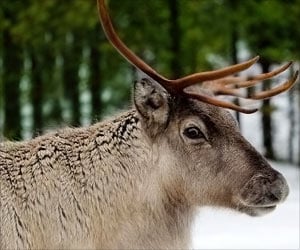
New COVID-19 Infection Reservoir in Animal Found
Previous studies have shown that COVID-19 can be passed from humans to domestic and captive animals including cats, dogs, zoo animals, and, most notably, farmed mink. But, until now, the disease had not been shown to spread in wildlife species.
White-tailed deer are the most abundant large mammal in North America with a range extending from Canada to South America. The US population alone is estimated to number 30 million animals.
They are a social species that live in family groups of two to 12 individuals that can thrive in a range of habitats, including urban parks and woodland.
The fact that they often live close to people provides several opportunities for the disease to move between the two species.
This can include wildlife management operations, field research, recreation, tourism, and hunting. Hunters are likely to be one of the most obvious sources of potential reinfection as they regularly handle dead animals.
It has also been suggested that water sources contaminated with coronavirus during the period when COVID infections were spiking in the human population might provide a pathway for transmission, although this has yet to be proved.
The findings from these latest studies have raised concerns that white-tailed deer could be a reservoir of COVID-19 because it infects not only large numbers of animals but also humans.
It is important to underline that there is currently no evidence of SARS-CoV-2 transmission from white-tailed deer to humans.
Initial experimental work has also suggested that infected deer tend not to have symptoms. Still, disease transmission in wildlife populations has considerable implications for human and animal health.
There is also a possibility that viral mutation in a reservoir host, such as white-tailed deer, could lead to new variants of the disease. These variants may lead to greater infection rates, increased virulence (severity of symptoms), and prove more effective at evading the human immune system.
Likewise, any reinfection from wildlife reservoirs could also complicate our long-term efforts to fight and suppress the disease.
It is important to note that there are limitations to these studies, both in terms of the methods used and the limited geographical range of investigation.
However, the combined findings from two recent studies highlight that transmission of COVID-19 is likely to be widespread in white-tailed deer.
There is a great deal that we still need to learn about the developing situation with COVID and deer. Research is urgently needed to assess the risk that this potential reservoir of SARS-CoV-2 presents to humans, as well as the possible spread of the virus to other wildlife species that deer interact with, such as predators and scavengers.
Source: Medindia
Stay connected with us on social media platform for instant update click here to join our Twitter, & Facebook
We are now on Telegram. Click here to join our channel (@TechiUpdate) and stay updated with the latest Technology headlines.
For all the latest Health News Click Here
For the latest news and updates, follow us on Google News.

